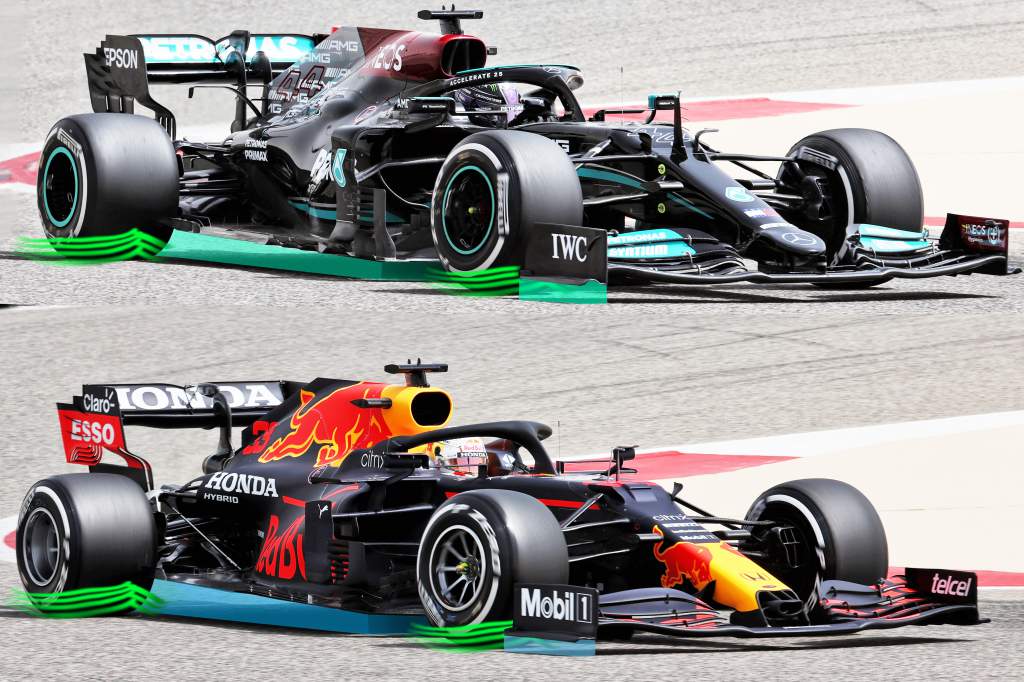Up Next

In recent years, two clear design philosophies in Formula 1 have stood out. The Mercedes concept is a relatively flat car, while Red Bull favours a high-rake design where the rear ride height is higher.
There has been plenty of debate about which is better, with Mercedes having seemingly won the argument given its run of success.
But after its troubles in testing, there have been suggestions that the low-rake concept makes it more difficult to adapt to the modified floor rules for 2021 designed to cut rear downforce.
Let’s look in more detail at the differences between the two approaches, using Red Bull and Mercedes as the case studies.
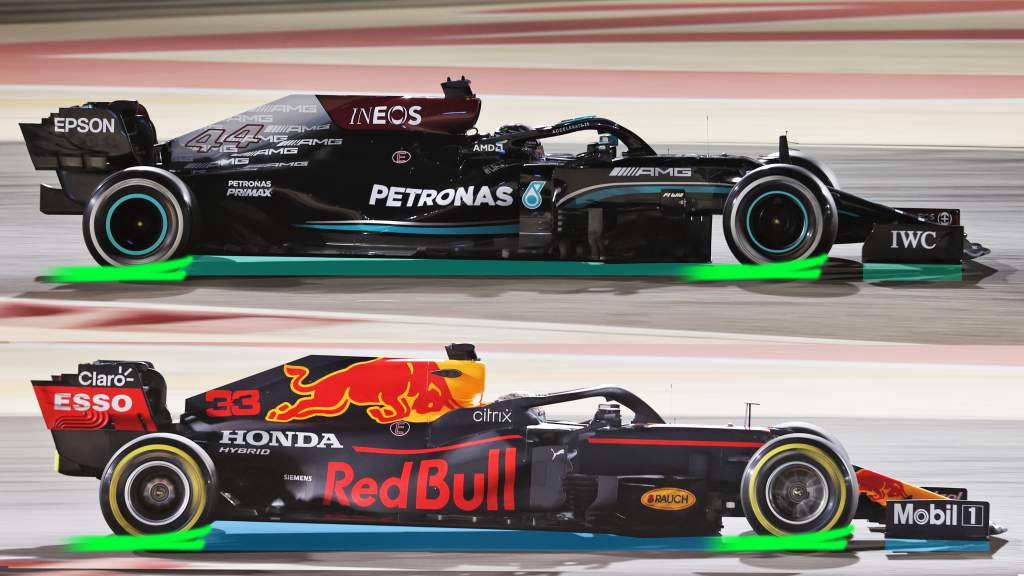
The shading of these side shots shows the difference between high rake (Red Bull) and low rake (Mercedes).
If you only focus on the aerodynamic perspective, then high rake should – and I use the word loosely – generate more downforce. But there are other factors to consider.
The resulting increase in height of the centre of gravity can help to rotate the car on corner entry, but the normal trend is to keep it as low as possible.
The higher the CoG the more the car wants to effectively fall over at the rear and the rear roll centre will need to be raised to compensate for that.

You can actually see in the rear view pictures above the angle of the top rear wishbone, again a different philosophy in the rear suspension geometry.
So it’s all about achieving the right compromise and ensuring your potential positives outweigh the negatives.
To run high rake successfully, you need to make sure that whatever airflow structures you have acting as a ‘skirt’ to seal the underfloor are robust enough.
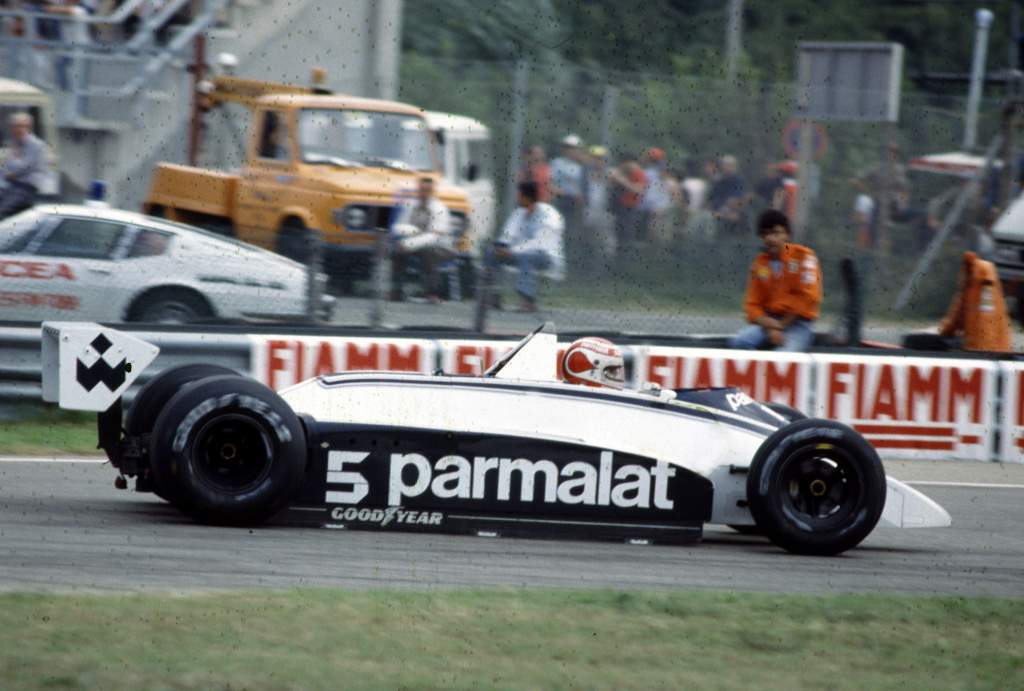
In the early 1980s, cars could run bodywork to do this before physical skirts were banned, so the effect must now be achieved by airflow. The aim is to ensure the low pressure in the underfloor doesn’t pull in too much airflow from the outside, effectively you want to keep it separate. This is what we mean by ‘sealing’ the underfloor.
Therefore, it is essential that these invisible airflow skirts don’t break down with the slightest side wind or turbulence. If that can’t be guaranteed, the extra downforce it might produce can be very inconsistent. This can be more difficult to achieve with a high-rake car.
To quantify the difference in ride heights based on the gaps to the ground at the front and rear axle centre-line, Mercedes would have a static ride height of around 25mm at the front and 75mm at the rear. The Red Bull would be something like 25mm at the front and 125mm – or even more – at the rear.
F1 cars today tend to understeer in low and medium speed corners. The high rake philosophy means the front wing is that little bit closer to the ground in those types of corners, which can reduce this understeer thanks to ground effect.
Not only that, but the high rake increases the diffuser volume ratio relative to the ground clearance of the front end. This means the whole car is working as a diffuser that allows the airflow to expand after being constricted under the leading edge of the underfloor, on top the rear diffuser itself.
With the numbers suggested, the Mercedes would have an underfloor expansion ratio of 3:1 and the Red Bull a ratio of 5:1. With the same side sealing solutions, the airflow under the flat floor area with the larger ratio will have to travel faster to get from the front to the rear of the car to fill up that volume.
With these sort of ride height differences at the rear of the diffuser – which we have shaded – and the same diffuser width, which all cars have, you are talking about something like a 25% increase in the overall diffuser area.
As the air flow increase in speed to fill that void it will generate more suction to pull the car down under that large flat floor area.
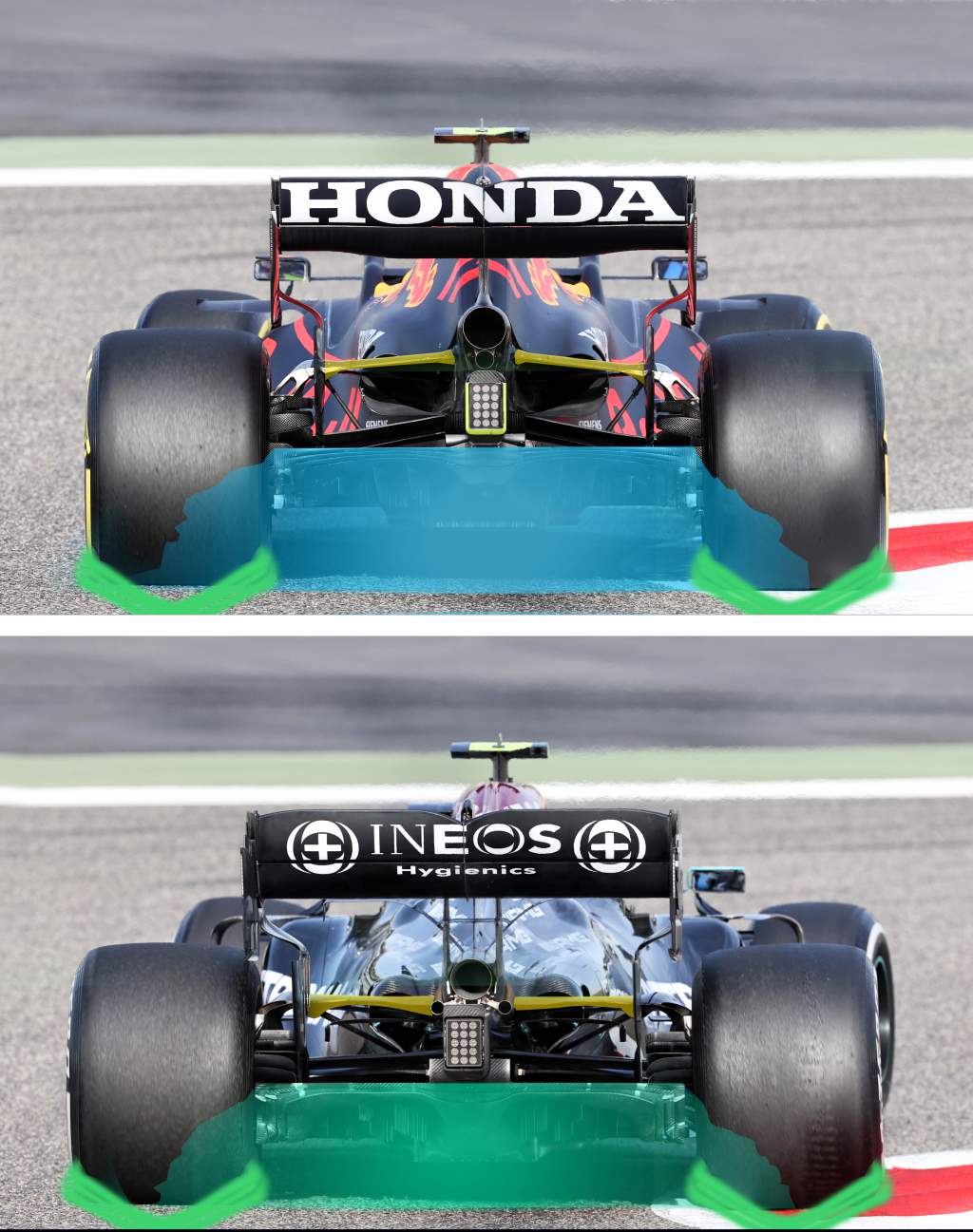
From the rear, it’s easy to see the increased volume of the diffuser suction area on the Red Bull compared to the Mercedes.
On both cars, the sides of the diffuser work in conjunction with the low pressure area behind the rear tyre. If these combine effectively, it increases the total volume of the low pressure area behind the car, and as a side benefit it can improve the efficiency of the overall car by filling up some of that void behind the rear tyres.
Containing that low pressure and managing it is not easy. This is where what is called the tyre squirt comes into play. Shown here in green, it can have a major effect on the consistency of the diffuser.
The tyre squirt is airflow generated by the tyre turning onto the track surface. This is then displaced around the inside and outside of the tyre contact patch and it tries to go back into the low pressure void behind the contact patch.
Using this tyre squirt to help the performance of the outer extremities of the diffuser is also critical to diffuser performance.
If the tyre squirt is not controlled it would just be sucked under the floor, reducing the effectiveness of the diffuser and losing you downforce.
We have illustrated the tyre squirt going around the tyre fairly symmetrically, but it tends to get pulled towards whichever side of the tyre has the lowest pressure.
At the rear, it tends to get pulled inwards and the teams use the strakes on the top of the floor just in front of the rear tyre and the turning vanes on the inner surface of the brake ducts to minimise the effect this has on the diffuser’s undersurface.
The strakes on top of the floor will set up vortices to help realign that tyre squirt and keep it as close as possible to the sides of the tyre. The turning vanes on the sides of the brake ducts will pull those vortices upwards, which also helps seal that area of the diffuser.
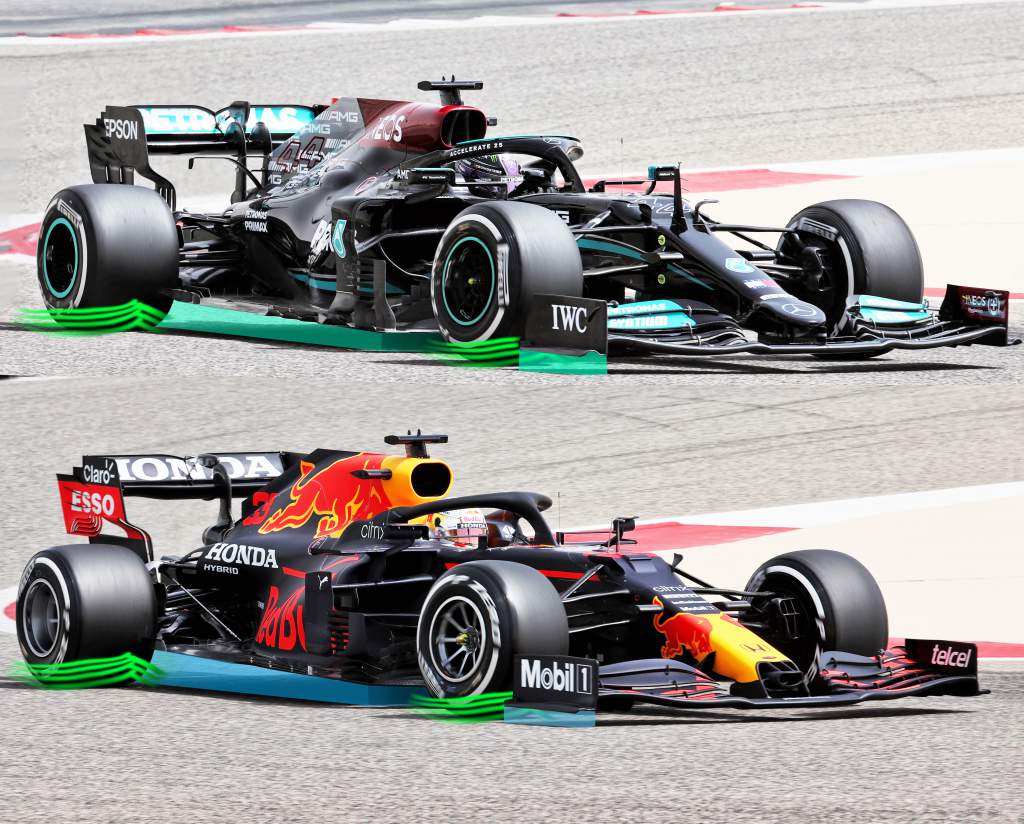
At the front, the tyre squirt gets pulled more evenly to the inside and outside of the tyre, as you come further away from the front tyre it then starts to get pulled in under the leading edge of the underfloor. This is why it’s important to separate the back of the front tyre and the leading edge of the side pod as much as possible.
When we had what were called the outwash endplates and turning vanes on the wing before the 2019 rule changes, these were all trying to turn the airflow around the outside of the front tyre and connect it up to the tyre squirt.
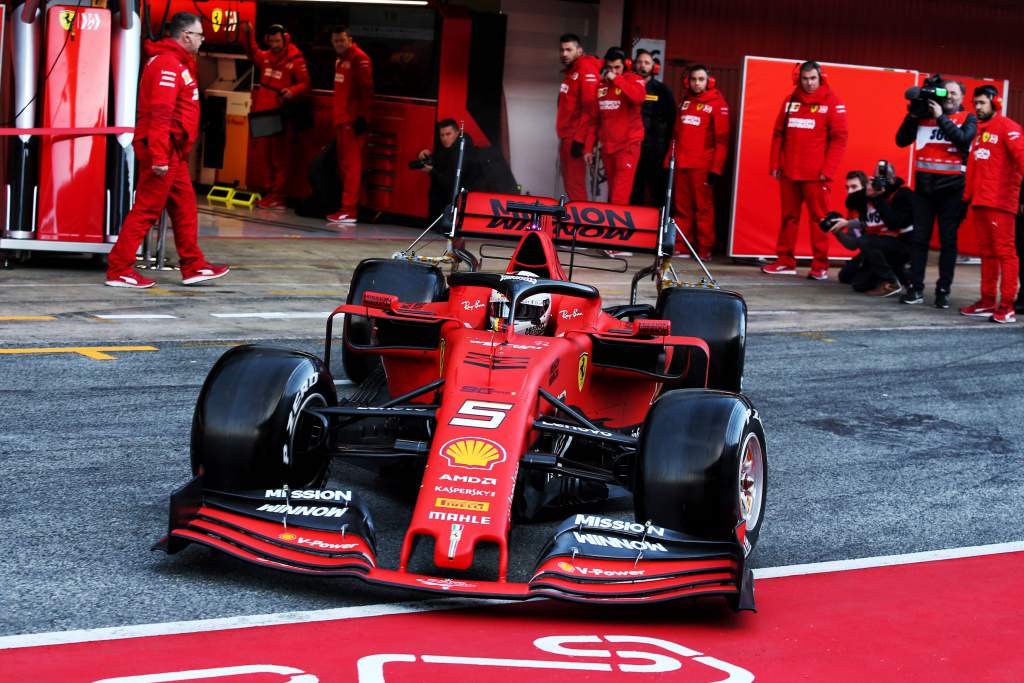
When all that stuff disappeared with the simplified front wings, Ferrari went for a very low angle on the front flaps at the outboard end, while Mercedes stuck to what was a more normal angle.
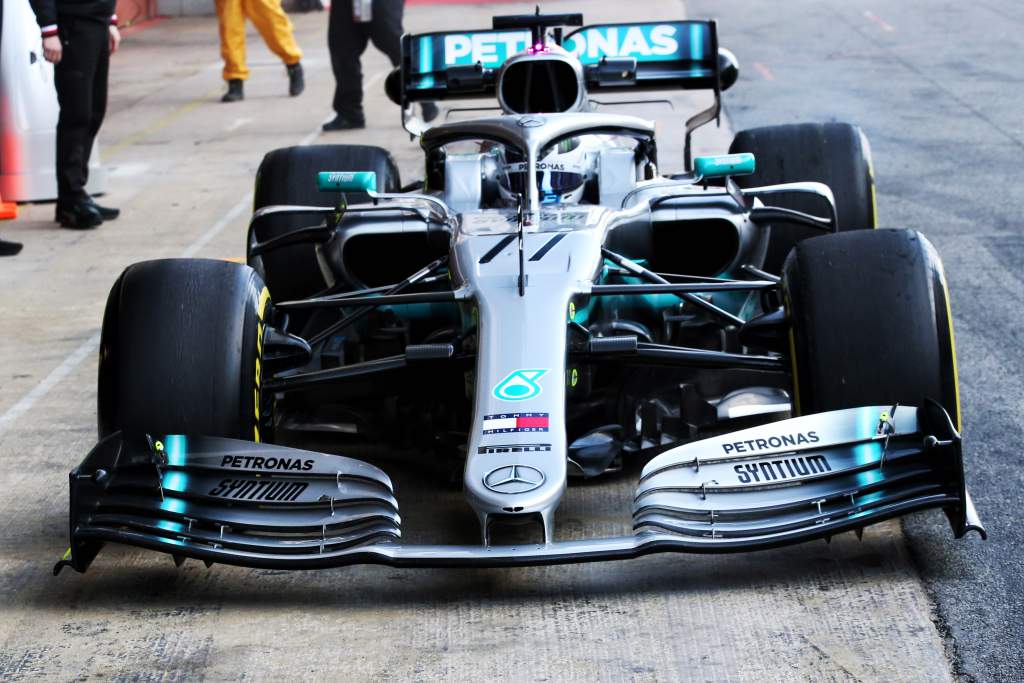
Over the last couple of years, the two teams have stuck with their overall philosophies on this, but converged by about 50%. That’s a long way off being the same, but closer than when these rules came into force.
Alfa Romeo still goes for a very flat angle to the outer wing flaps, but I think there are other reasons for that. Alfa Romeo runs with that section of the front mainplane very low, which means the front wing is very sensitive to the ground.
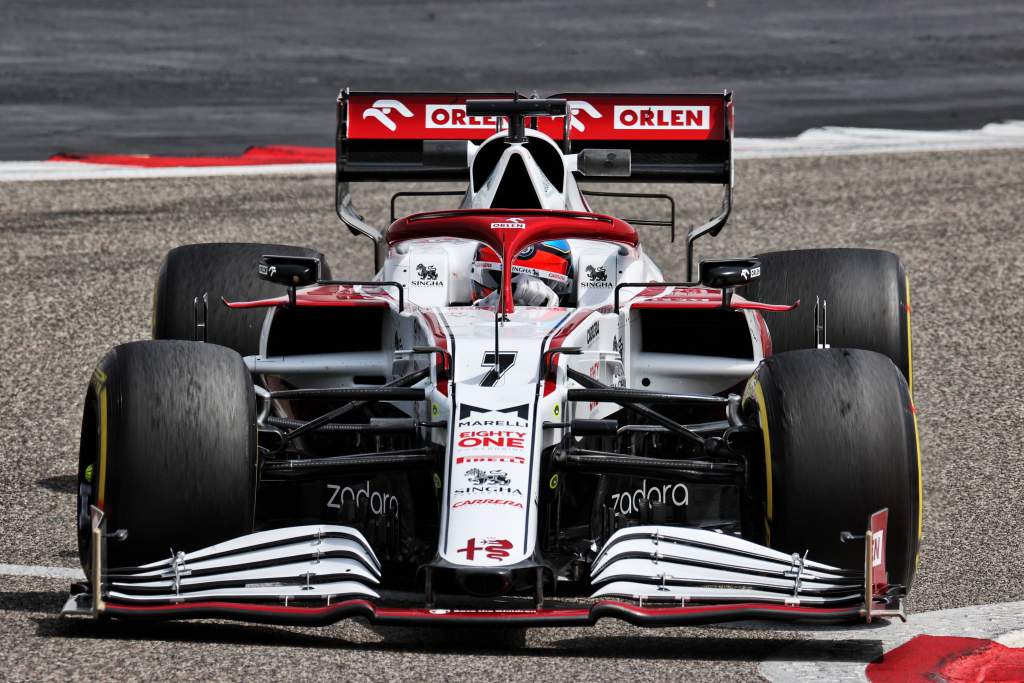
This means the only way it can get any control over the sensitivity is to make that part of the wing do less work so when it does stall thanks to getting too close to the ground, the loss is not so great as it would be if they ran higher flap angles in that area.
As a wing gets closer to the ground, it acts like a venturi and the airspeed in the throat area (lowest point) increases in speed as it tries to fill up the volume at the wing’s trailing edge.
This increase in speed generates downforce by reacting between the underside of the wing and the track surface, which is called ground effect. At some point, it just can’t travel any faster and stalls so you go from lots of downforce to nothing instantly.
There are two ways to fix it. The first is to raise the lowest point from the track surface to give it a bigger working window, as most teams do. The second is to reduce the volume at the wing’s trailing edge so that the airspeed under the throat never gets critical as Alfa Romeo does. Personally, I would go for the former.
The front of the cars run a vertical stiffness that is at least three times greater on the front than the rear. This is to cope with braking forces of around 5G. By comparison, acceleration forces are around 1G.
There are all sorts of third spring arrangements which come into play on the straights to stop the cars dragging on the ground too much, but in general that would be the vertical stiffness ratio front to rear that the car operates at through corners.
So with the same aerodynamic load and distribution, Red Bull can run the rear of its car with a softer vertical stiffness. This will allow the car just that bit more movement and improve traction off the slower corners and reduce tyre temperature.
It can also induce more understeer in slow corners, but the lower front wing reduces that. This means it’s a bit of a circle of events to get the best out of everything.

It’s not all plain sailing as with more movement you need to manage the underfloor and front wing aero map much more closely. No matter which philosophy you decide to use, managing how the centre of pressure moves around the car at different speeds is critical to its overall performance.
The centre pressure is where the sum total of the downforce acts on the car and therefore has a significant impact on the balance of the car as it moves around.
This year, the floor area, diffuser strakes and turning vanes on the lower part of the rear brake ducts are reduced. I expected the low-rake cars with less gap to the ground to lose less downforce as a result, but pre-season testing initially suggests that assumption was wrong.
We will have to wait to see how the first races turn out but from pre-season testing the high rake cars seemed to have the upper hand.
If I was to try to come up with a reason for this, it could be that with effectively a 25% larger diffuser area on the high rake cars it doesn’t really matter where the airflow is coming from, it will increase in speed more than the low rake cars to simply fill that low pressure volume.
Everyone is suffering from more airflow being sucked under the floor of the car. It seems the harder you are working the diffuser the better it can handle this leakage.
I don’t think it’s a night and day difference and I would be very surprised to see Mercedes or Aston Martin turn up for the Bahrain race with the car set up like a Red Bull.
There’s a lot more to it than just raising the rear ride height because it impacts the angle of every aerodynamic surface on the car. But I’m sure the low-rake teams will be thinking about the problem and experimenting with it using their limited CFD and windtunnel time.
Everyone does their best to seal the underfloor and this will be an ongoing challenge. The biggest problem if you just convert to a high rake would be the front wing sensitivity.
Red Bull, as we saw last year, didn’t have it easy finding a solution for this and it’s very difficult to predict. In the CFD model and the windtunnel model, the relationship to the ground is fairly steady state but on track that gap is opening and closing all the time. This can induce an aerodynamic stall just when you don’t want it.
Front wing sensitivity needs to be signed off on track as some drivers, like Max Verstappen, show they can handle it and others not so.
We will know more in just over a week’s time. All I hope for is a good battle at the front between two or three teams. I really don’t care who they are, as long as the winner can’t be predicted with confidence after qualifying.


